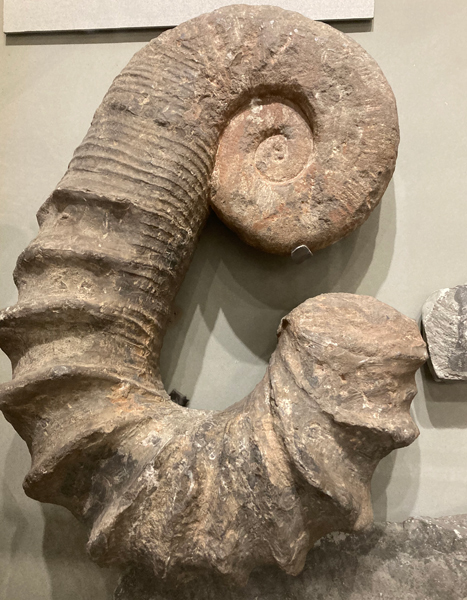Most ammonites had planispiral shells. However, throughout the course of the long evolutionary history of these remarkable and diverse cephalopods a huge variety of shell forms evolved. Everything Dinosaur team members spotted a stunning example of a heteromorph ammonite on display in the fossils gallery at the Manchester Museum.

Picture credit: Everything Dinosaur
Heteromorph Ammonites
If asked to draw an ammonite shell, most people would sketch a tightly coiled shell, in a single plane with the diameter of each successive whorl getting bigger. This is a description of a typical ammonite planispiral shell. This would be an example of a homomorph shell. During the Late Jurassic, several new types of ammonite began to appear with varying degrees of uncoiled shells.

The picture (above) shows the colourful CollectA Pravitoceras ammonite model. This figure was added to the CollectA model range in 2021. The CollectA Age of Dinosaurs series includes numerous extinct invertebrates. Trilobites, nautiloids, belemnites and ammonites are included in this substantial range.
To view the range of CollectA not-to-scale figures: CollectA Age of Dinosaurs Popular Models.
These types of ammonites (heteromorph ammonites), became increasingly abundant during the Cretaceous and by the Late Cretaceous they were widespread and extremely diverse with a myriad of different types occupying marine environments.
Important Zonal Fossils (Heteromorph Ammonite Types)
Heteromorph ammonites were extremely numerous by the end of the Cretaceous. Many genera have become important zonal fossils. Both homomorph and heteromorph ammonites are used extensively by geologists for zoning strata and for relative dating of rock formations.
Visit Everything Dinosaur’s award-winning website: Everything Dinosaur.






Leave A Comment